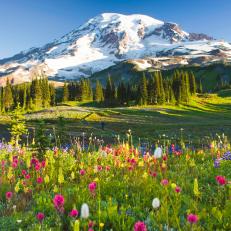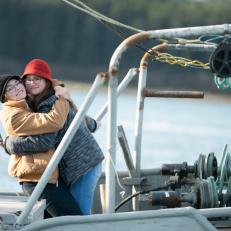The Western US is All About Landscape and Wildlife
From the deserts of Arizona to the natural arches of Utah and the mountains of Wyoming, this trip offers an up-close view of some of the most stunning landscapes and impressive wildlife in the West.
Arches National Park
Nothing can be more humbling and inspiring than the wild West. Majestic mountain ranges, diverse landscapes and magnificent natural wonders are seemingly at every turn.
Cave Creek
Cave Creek is just minutes north of Phoenix and Scottsdale, this lively community is nestled in the rolling desert foothills. Its rocky vistas are a stunning backdrop to award-winning hiking trails and bike paths.
Petrified Forest National Park
The Petrified Forest National Park a few hours from Flagstaff, where you'll discover interesting wildlife, archaeological sites and spectacular backcountry hiking. There's even a B.A.R.K. Ranger program, so your leashed fur buddy can take part in the adventure. FUN FACT: The amazing colors found in petrified wood come from three minerals -- pure quartz, manganese oxides and iron oxides. But don't try to take a piece home with you -- that's strictly prohibited!
The Painted Desert
Known for its bands of brilliantly colored sediment, the Painted Desert is situated near the eastern edge of the Grand Canyon and just inside the northern portion of the Petrified Forest National Park. This Arizona hot spot offers breathtaking hiking paths, picturesque vistas, and extraordinary sunset views.
Mystifying Moab
Moab, a relatively small town in eastern Utah, neighbors Arches National Park and Canyonland Park so it is next to all the area's natural wonders.
Arches National Park
Touted as the world's red-rock wonderland, this park near Moab, Utah, is home to over 2000 natural stone arches and countless mind-boggling rock formations.
Natural Steps
These natural steps are just one example of the many unique rock formations you’ll discover at the park.
Double Arch
This awe-inspiring pair of arches, found in the Windows section of the park, shares a stone foundation and was formed by downward water erosion, rather than the usual side to side erosion. That's part of what makes the Double Arch so rare.
Skyline Arch
This arch is located near the Devil's Garden Campsite and Thompson, Utah.
Historic Wolfe Ranch
Nestled inside Arches National Park quietly sits a historic log cabin built in 1906 by John Wesley Wolfe and his family, who were settlers from Ohio. All six family members lived in this one room cabin, raising cattle and living off the land until they sold it in 1910. Ultimately, Wolfe Ranch and the surrounding acreage were listed on the National Register of Historic Places in 1975, then became part of the Arches National Monument.
Grand Teton Range
This magnificent mountain range in Wyoming is part of the larger Rocky Mountain system and spans 40 miles across.
Experience the Seasons
Out West in the warmer "green" season or the cooler "white" season, Wyoming landscapes are fantastic.
The Scenic Route
Driving into Grand Teton National Park is a spectacle, especially during the white season. If you plan on visiting during the winter months, be sure to research road closures and outfit your vehicle with the appropriate gear for driving in icy conditions.
Home on the Range
The majestic American buffalo (a.k.a. American bison) is the state mammal of Wyoming. This massive creature is deeply woven into American history with millions once roaming North America (European settlers hunted it to near extinction). The American bison was also an integral part of Native American culture-providing many tribes with food, shelter and clothing. However, visitors should be wary of these beautiful animals -- buffalo they can be dangerous and have been known to run as fast as 40 miles per hour.
Jenny Lake
This gorgeous lake is located inside Grand Teton National Park and is a lovely spot during the "green" season. During the winter months the lake is frozen and often snow-covered.
Follow the Herd
One of the largest species within the deer family, elk feed on grass, plants and bark. During the rut (mating season) male elk use their large antlers to posture and spar for mating rights. A healthy elk in the wild will live to be around 12 years old.
Finding Sanctuary
Herds of elk can be seen throughout Wyoming, some in the National Elk Refuge. Near Jackson, the sanctuary was set up to help protect the elk once it was determined that the city’s development encroached on certain migration routes.
Out With the Old
Elk is part of the deer family of animals, so they're deciduous -- meaning they grow and lose their antlers each year. They shed their beautiful antlers in late winter or early spring.
Extremely Busy Beavers
The powerful Snake River that winds around Wyoming was no match for a dedicated family of beavers. For many years these industrious little creatures have been busy stopping up a slow-moving branch of the Snake River at the base of the Tetons to create beautiful pools of water at Schwabacher Landing. It's one of the most photogenic areas in Jackson Hole! When the waters are still you can capture the reflection of the stunning Teton Range looming above.





















